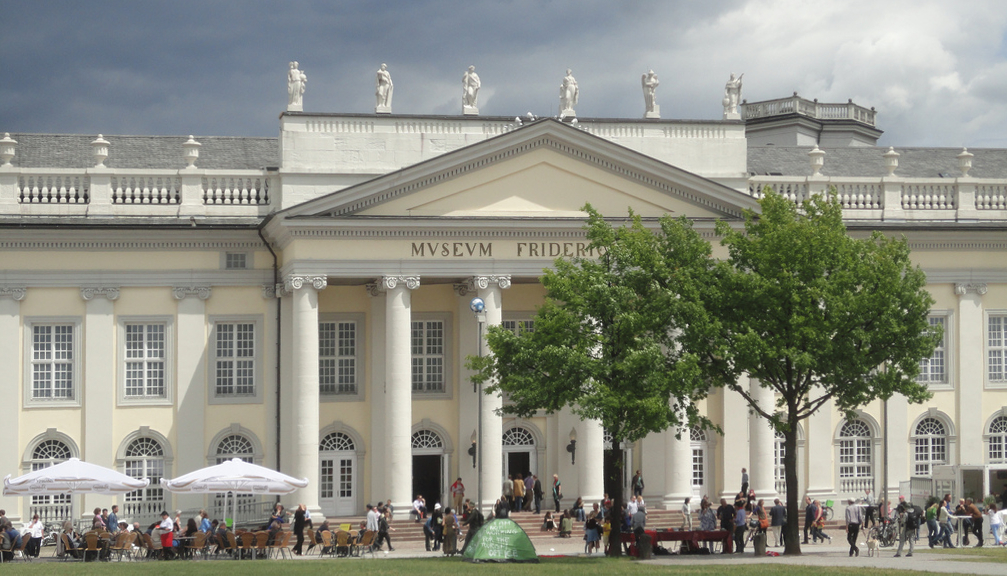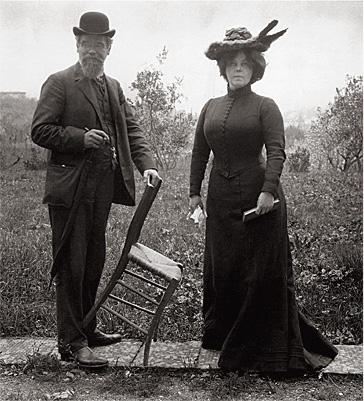|
Emy Roeder
Emy Roeder (30 January 1890 – 7 February 1971) was a modern German sculptor born in Würzburg, Germany. During the first third of the twentieth century she was one of a number of women that were associated with the German Expressionist movement of Modern art. She was the first woman to achieve ''Master Student'' of sculpture as a student at the Berlin Academy In 1937 her work was labeled Degenerate art by the Nazis. After World War II she was arrested in Italy by the Allies because she was a German citizen and then sent to an internment camp. She received the Villa Romana prize in 1936, and was awarded the Federal Cross of Merit for her life work in 1960. She died, aged 81, in Mainz. Biography In her late teens from 1908 to 1910 she began to study both drawing and sculpture which led her to further her studies and attend Kunstakademie in Munich, Germany. She attended for two years, but found her experience to be a “disappointment”. It was in 1912 that she moved to Darmsta ... [...More Info...] [...Related Items...] OR: [Wikipedia] [Google] [Baidu] |
Würzburg
Würzburg (; Main-Franconian: ) is a city in the region of Franconia in the north of the German state of Bavaria. Würzburg is the administrative seat of the ''Regierungsbezirk'' Lower Franconia. It spans the banks of the Main River. Würzburg is situated approximately east-southeast of Frankfurt am Main and approximately west-northwest of Nuremberg (). The population (as of 2019) is approximately 130,000 residents. The administration of the ''Landkreis Würzburg'' ( district of Würzburg) is also located in the town. The regional dialect is East Franconian. History Early and medieval history A Bronze Age (Urnfield culture) refuge castle, the Celtic Segodunum,Koch, John T. (2020)CELTO-GERMANIC Later Prehistory and Post-Proto-Indo-European vocabulary in the North and West p. 131 and later a Roman fort, stood on the hill known as the Leistenberg, the site of the present Fortress Marienberg. The former Celtic territory was settled by the Alamanni in the 4th or 5th century ... [...More Info...] [...Related Items...] OR: [Wikipedia] [Google] [Baidu] |
Erich Heckel
Erich Heckel (31 July 1883 – 27 January 1970) was a German painter and printmaker, and a founding member of the group ''Die Brücke'' ("The Bridge") which existed 1905–1913. His work was part of the art competitions at the 1928 Summer Olympics and the 1932 Summer Olympics. Biography Heckel was born in Döbeln, Saxony, the son of a railway engineer. Between 1897 and 1904 he attended the Realgymnasium in Chemnitz, before studying architecture in Dresden. He left after three terms, shortly after the foundation of ''Die Brücke'', an artists' group of which he was secretary and treasurer. The other founder-members, also architectural students, were Ernst Ludwig Kirchner, Karl Schmidt-Rottluff and Fritz Bleyl. He worked in the office of the architect Wilhelm Kreis until July 1907, when he resigned to become a full-time artist. Career Heckel met the other founding members of Die Brücke, Ernst Ludwig Kirchner, Karl Schmidt-Rottluff, and Fritz Bleyl, while studying architectur ... [...More Info...] [...Related Items...] OR: [Wikipedia] [Google] [Baidu] |
Artists From Würzburg
An artist is a person engaged in an activity related to creating art, practicing the arts, or demonstrating an art. The common usage in both everyday speech and academic discourse refers to a practitioner in the visual arts only. However, the term is also often used in the entertainment business, especially in a business context, for musicians and other performers (although less often for actors). "Artiste" (French for artist) is a variant used in English in this context, but this use has become rare. Use of the term "artist" to describe writers is valid, but less common, and mostly restricted to contexts like used in criticism. Dictionary definitions The ''Oxford English Dictionary'' defines the older broad meanings of the term "artist": * A learned person or Master of Arts. * One who pursues a practical science, traditionally medicine, astrology, alchemy, chemistry. * A follower of a pursuit in which skill comes by study or practice. * A follower of a manual art, such as a m ... [...More Info...] [...Related Items...] OR: [Wikipedia] [Google] [Baidu] |
1971 Deaths
* The year 1971 had three partial solar eclipses (February 25, July 22 and August 20) and two total lunar eclipses (February 10, and August 6). The world population increased by 2.1% this year, the highest increase in history. Events January * January 2 – 66 people are killed and over 200 injured during a crush in Glasgow, Scotland. * January 5 – The first ever One Day International cricket match is played between Australia and England at the Melbourne Cricket Ground. * January 8 – Tupamaros kidnap Geoffrey Jackson, British ambassador to Uruguay, in Montevideo, keeping him captive until September. * January 9 – Uruguayan president Jorge Pacheco Areco demands emergency powers for 90 days due to kidnappings, and receives them the next day. * January 12 – The landmark United States television sitcom ''All in the Family'', starring Carroll O'Connor as Archie Bunker, debuts on CBS. * January 14 – Seventy Brazilian political prisoners are rel ... [...More Info...] [...Related Items...] OR: [Wikipedia] [Google] [Baidu] |
1890 Births
Year 189 ( CLXXXIX) was a common year starting on Wednesday (link will display the full calendar) of the Julian calendar. At the time, it was known as the Year of the Consulship of Silanus and Silanus (or, less frequently, year 942 ''Ab urbe condita''). The denomination 189 for this year has been used since the early medieval period, when the Anno Domini calendar era became the prevalent method in Europe for naming years. Events By place Roman Empire * Plague (possibly smallpox) kills as many as 2,000 people per day in Rome. Farmers are unable to harvest their crops, and food shortages bring riots in the city. China * Liu Bian succeeds Emperor Ling, as Chinese emperor of the Han Dynasty. * Dong Zhuo has Liu Bian deposed, and installs Emperor Xian as emperor. * Two thousand eunuchs in the palace are slaughtered in a violent purge in Luoyang, the capital of Han. By topic Arts and sciences * Galen publishes his ''"Treatise on the various temperaments"'' (aka ''O ... [...More Info...] [...Related Items...] OR: [Wikipedia] [Google] [Baidu] |
Union List Of Artist Names
The Union List of Artist Names (ULAN) is a free online database of the Getty Research Institute using a controlled vocabulary, which by 2018 contained over 300,000 artists and over 720,000 names for them, as well as other information about artists. Names in ULAN may include given names, pseudonyms, variant spellings, names in multiple languages, and names that have changed over time (e.g., married names). Among these names, one is flagged as the preferred name. Although it is displayed as a list, ULAN is structured as a thesaurus, compliant with ISO and NISO standards for thesaurus construction; it contains hierarchical, equivalence, and associative relationships. The focus of each ULAN record is an artist. In the database, each artist record (also called a subject) is identified by a unique numeric ID. The artist's nationality is given, as are places and dates of birth and death (if known). Linked to each artist record are names, related artists, sources for the data, and notes. ... [...More Info...] [...Related Items...] OR: [Wikipedia] [Google] [Baidu] |
Kassel
Kassel (; in Germany, spelled Cassel until 1926) is a city on the Fulda River in northern Hesse, Germany. It is the administrative seat of the Regierungsbezirk Kassel and the district of the same name and had 201,048 inhabitants in December 2020. The former capital of the state of Hesse-Kassel has many palaces and parks, including the Bergpark Wilhelmshöhe, which is a UNESCO World Heritage Site. Kassel is also known for the '' documenta'' exhibitions of contemporary art. Kassel has a public university with 25,000 students (2018) and a multicultural population (39% of the citizens in 2017 had a migration background). History Kassel was first mentioned in 913 AD, as the place where two deeds were signed by King Conrad I. The place was called ''Chasella'' or ''Chassalla'' and was a fortification at a bridge crossing the Fulda river. There are several yet unproven assumptions of the name's origin. It could be derived from the ancient ''Castellum Cattorum'', a castle of the ... [...More Info...] [...Related Items...] OR: [Wikipedia] [Google] [Baidu] |
Documenta
''documenta'' is an exhibition of contemporary art which takes place every five years in Kassel, Germany. The ''documenta'' was founded by artist, teacher and curator Arnold Bode in 1955 as part of the Bundesgartenschau (Federal Horticultural Show) which took place in Kassel at that time. It was an attempt to bring Germany up to speed with modern art, both banishing and repressing the cultural darkness of Nazism. This first ''documenta'' featured many artists who are generally considered to have had a significant influence on modern art (such as Picasso and Kandinsky). The more recent editions of the event feature artists based across the world, but much of the art is site-specific. Every ''documenta'' is limited to 100 days of exhibition, which is why it is often referred to as the "museum of 100 days". ''Documenta'' is not a selling exhibition. Etymology of ''documenta'' The name of the exhibition is an invented word. The term is supposed to demonstrate the intention of ... [...More Info...] [...Related Items...] OR: [Wikipedia] [Google] [Baidu] |
Villa Romana Prize
The Villa Romana Prize, german: Villa-Romana-Preis, italic=no, is an art prize awarded by the Deutscher Künstlerbund. It was established in 1905 and is the oldest German art award. The prize consists of a one-year artistic residence in the Villa Romana, a nineteenth-century villa on the Via Senese in the southern outskirts of Florence, in Tuscany in central Italy. Max Klinger, who in 1903 had become vice-president of the Deutscher Künstlerbund, established the Villa Romana as a study centre for artists in 1905. He had bought it that year for 60,000 gold lire. The prize was first awarded in that year also. Among the many recipients of the award are Max Beckmann (1906), Ernst Barlach (1909), Joseph Fassbender (1929), Gerhard Marcks, (1937), Walter Stöhrer (1978), and Georg Baselitz (1965). Recipients 1905 to 1914 * 1905: Ulrich Hübner, Georg Kolbe, , , Max Kurzweil * 1906: Max Beckmann, Dora Hitz, Käthe Kollwitz, * 1907: Martin Brandenburg, Georg Burmester, F ... [...More Info...] [...Related Items...] OR: [Wikipedia] [Google] [Baidu] |





_1572.jpg)

